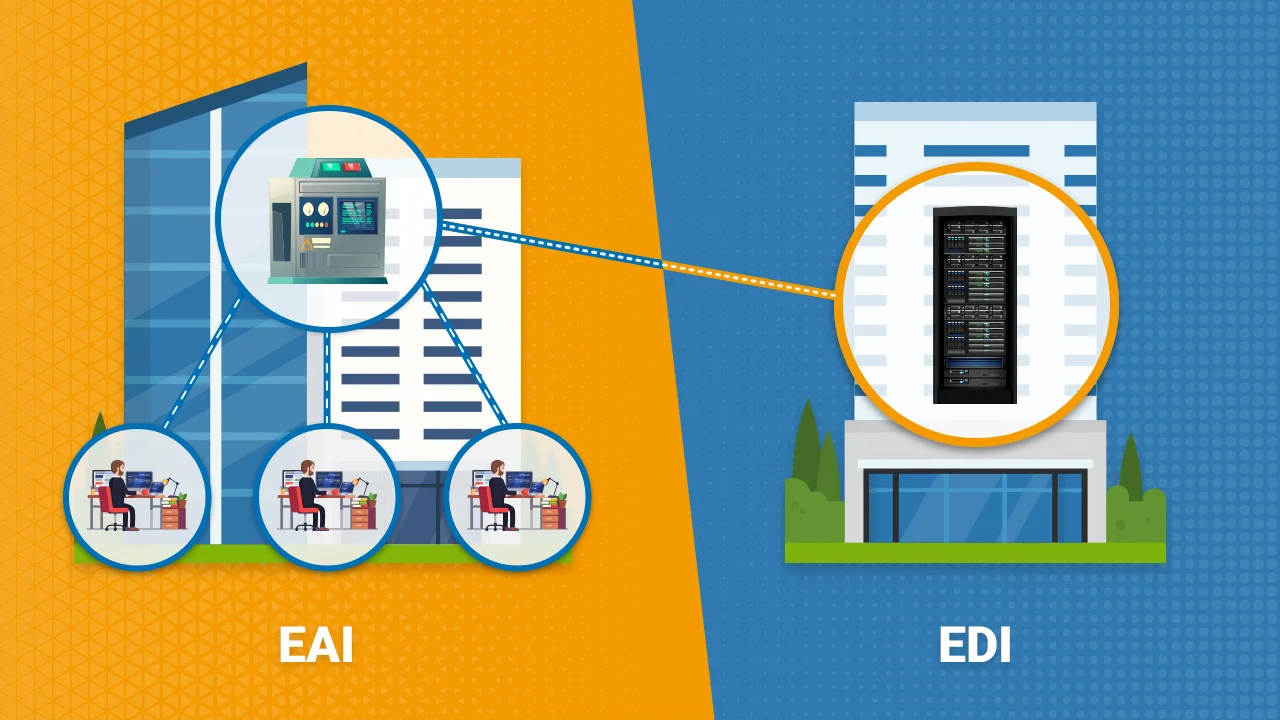Blog
In our blog you will find many exciting articles about i‑effect®, EDI and IBM i. If you have suggestions for a topic that interests you, we look forward to your suggestions.
EDI and EAI in one
Abstract - EDI is regarded as the final stage of electronic data interchange. With electronic data exchange, information reaches far beyond e-mail and is fully automated from the sender to the receiver system - without human intervention and without anyone controlling the transmitted document, possibly transferring data from there manually into the company's own ERP system.
Tuesday, 25. June 2019
The term EDI comprises two essential core components: First, there is the conversion, i.e. the conversion of formats. Document types are converted from one format to another so that the opposite system can read and process them. This is followed by EDI communication, i.e. the choice of the suitable or desired transmission protocol and the actual dispatch. i‑effect® has a modular structure: Those who do not need any conversion at first can also limit themselves to the pure EDI message or data exchange, i.e. the reception and transmission of EDI messages.
EDI also know as "electronic data interchange" describes the exchange of structured business data electronically between a company and its external partners. An EDI software converts raw data, e.g. from the IBM i environment (DB2), into the desired formats and sends business documents to various recipients via the appropriate communication protocol. With these functions, it represents a central exchange platform for electronic business transactions. So called the complete integration of enterprise applications - or maybe called Enterprise Application Integration (EAI)? But wait! Isn't this also an acronym known for a long time and somehow something different to EDI?
Indeed, while EDI primarily regulates the communication between systems in different companies (i.e. the external exchange of data), EAI means the integration of different systems of the IT landscape within a company via a central platform. EAI is thus the internal data exchange. An EAI system mediates multilaterally between different software applications, in the middle of which it sits like a data hub. Unlike conventional exchange procedures, EAI solutions do not have a 1:1 relation, but rather a star-shaped or bus-shaped architecture. The goal of system integration using EAI is smooth and integrated process handling.
EAI is easily confused with the "Enterprise Service Bus" concept. This is a network architecture that connects distributed services in a company's application landscape. It is also about integrating systems, but - unlike EAI - the data format within an ESB architecture is always uniform. Both approaches also differ in terms of structure. With ESB, the transmission of data and the connection of systems is regulated via a bus system, while EAI solutions have a spoke architecture ("hub and spoke"). ESB is often used as a component of EAI systems and there for data transport between different systems.
The number of IT systems in a company today is extensive: Office applications are available alongside ERP systems and special software for HR, warehouse management, CRM, etc. In most cases, the applications have been introduced gradually, come from different manufacturers and operate with their own file and database formats. However, within a company's business process logic, they are part of the whole, must interact with each other and exchange data. Otherwise a continuous processing of business processes is hardly possible.
Instead of programming complex interfaces to allow the systems to communicate bilaterally, EAI architectures are used. These can be seen as a preliminary stage of service-oriented architectures. Unlike there, however, the systems to be integrated are usually not changed in EAI. The EAI concept has been on the market for almost twenty years. Looking back, it did not replace EDI, contrary to forecasts to the contrary, but rather supplemented it, as Computerwoche magazine already predicted at that time.
Mappings across system wide business processes
An EAI system maps business processes across systems. The applications communicate with each other via the EAI component, regardless of which manufacturer, in which version or with which language they are programmed. It is responsible for the design of messages, the conversion of formats and the entire control of cross-system integration processes. Monitoring functions are of course also part of this. In this sense, EAI accelerates and streamlines the flow of information within a company.
In view of the fact that both terms - EDI and EAI - are thematically similar, overlaps are not uncommon. They occur, for example, when the EDI system forwards data to internal systems or sends or receives data externally and internally. In this sense, i‑effect® is more than just an EDI tool, it can also be used as an EAI instrument. This already shows its extended product name: menten offers a solution for electronic data exchange and data integration on IBM Power System. Like a fully functional EAI solution, i‑effect® can communicate in all directions and can be used as a data hub. In this sense, numerous customers no longer use the system for pure EDI traffic only, but for mediation between different software systems in their company.
Contact us Back to overview